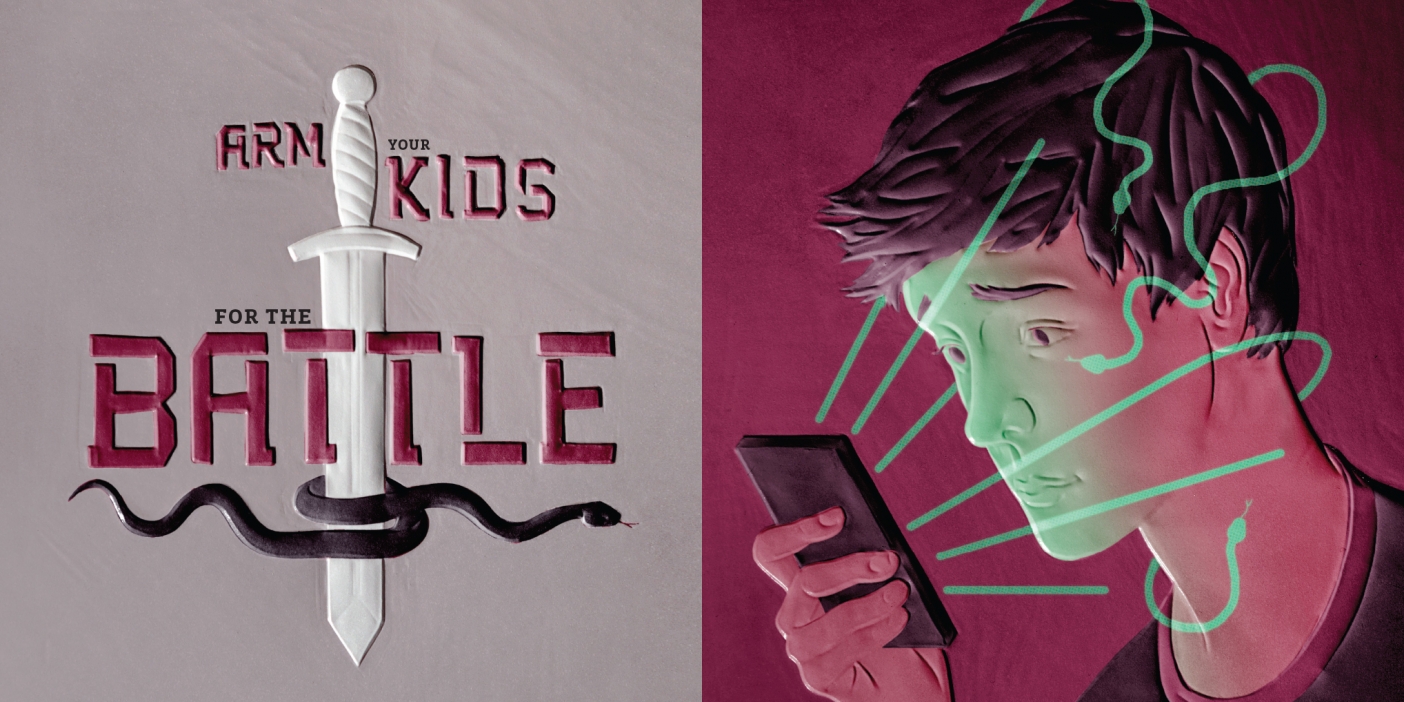Disinfomania
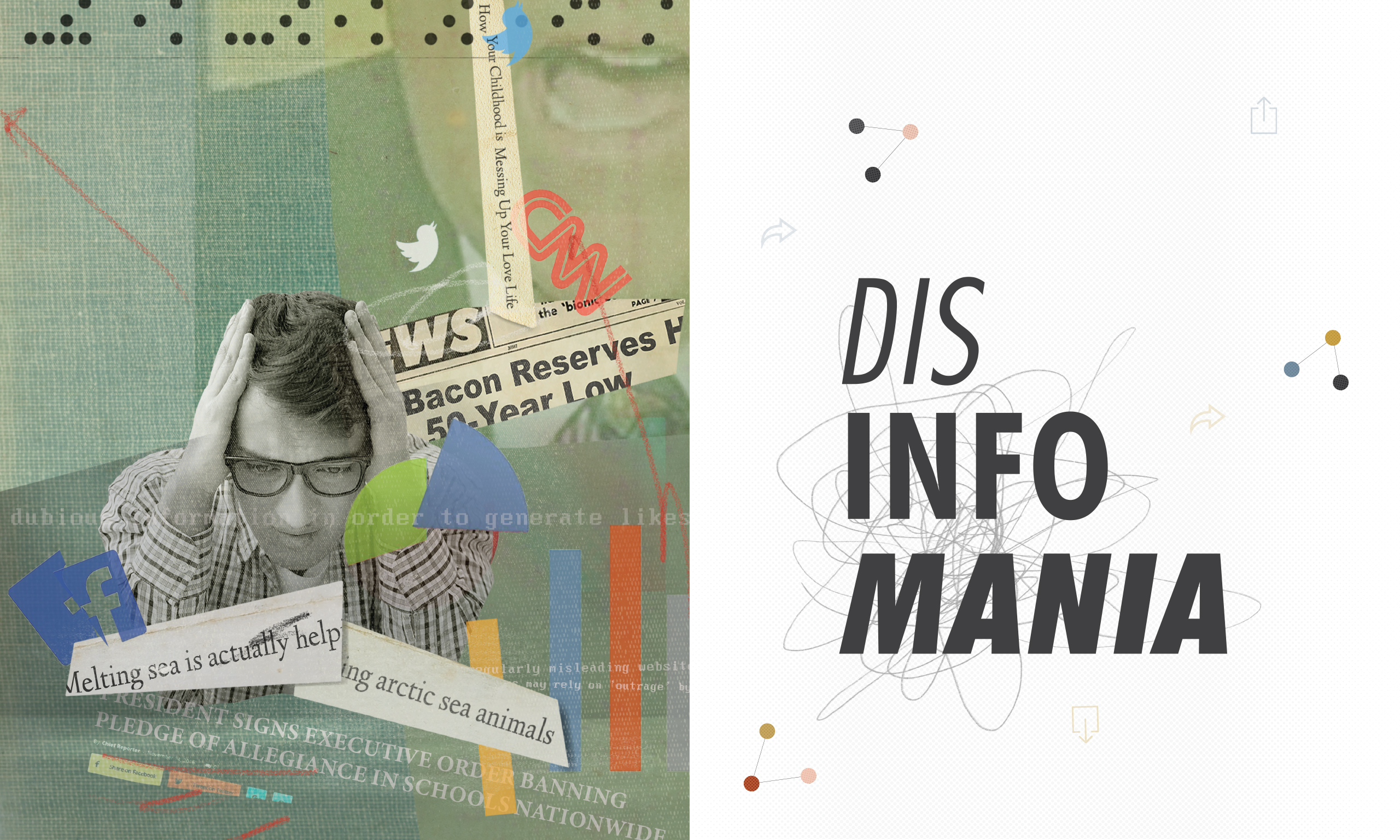
In the battle over facts and fakes, insights and hot takes, how can you become a savvier consumer of information?
By Melody McGrath Warnick (BA ’99) in the Winter 2022 Issue
At computers in BYU’s Harold B. Lee Library in the summer of 2017, 89 Writing 150 students faced off against fake news.
Or was the news fake? “Global warming fail: Study finds melting sea ice is actually helping arctic animals,” read a headline from The Blaze, one of five news articles that the volunteers in a study by BYU researchers evaluated for reliability. How trustworthy was the source? Was the article accurate? What about the NPR story about teens and birth control? Or a Washington Post piece about Elon Musk’s SpaceX program? Students were told to deploy whatever strategies they could to figure out which news stories to believe.
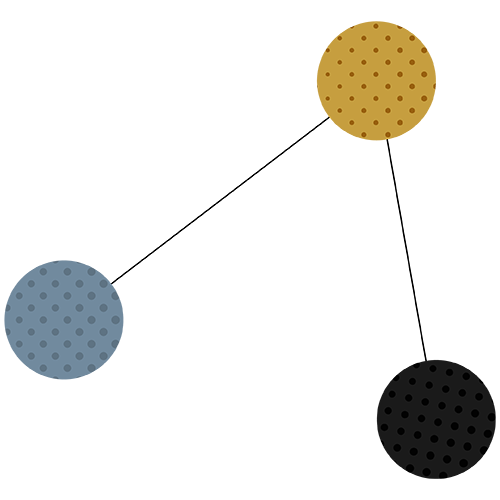
It didn’t go so well. Some students were sucked in by the wrong things, like graphics and professional design. (“Graphs are amazing support for almost anything,” enthused one.) Some gave two thumbs up to questionable content if it backed their existing beliefs. Others rejected the whole idea of news sources out of hand. (“Just so we’re clear,” ranted one student, “I’m not a huge fan of the media.”) “They really struggled,” says study coauthor Jessica Johnson Green (BA ’07, MA ’09), the Lee Library’s writing programs supervisor.
Students aren’t the only ones struggling to sift good information from bad. Long gone are the days when finding reliable news was as simple as opening the daily paper tossed on your driveway. Now we’re all surfing a veritable tsunami of news stories, Facebook posts, tweets, YouTube videos, and billions of other bits of data—much of it of dubious value. “We have the blessing of a lot of information, but it can also be a curse at times,” says Edward L. Carter (BA ’96, JD ’03), former director of the BYU School of Communications.

We’re all grappling with how to parse and interpret massive amounts of information, tasks made more challenging by both the sheer volume of media out there and a declining trust in traditional authority figures. (We don’t have Walter Cronkite telling us, “And that’s the way it is,” but we probably wouldn’t believe him if we did.) That puts the onus on us to determine the merit of what we read and watch—and there’s a lot of bad info out there. A December 2020 addition to the Church Handbook about “seeking information from reliable sources” warns that “some sources seek to promote anger, contention, fear, or baseless conspiracy theories” and that “members of the Church should seek out and share only credible, reliable, and factual sources of information.”
Learning to be news and media literate is not only a gospel-approved life skill but a vital strategy for managing today’s jet stream of information. At its core, “media literacy invites us to critical thinking,” says Amy Petersen Jensen (BA ’89, MA ’98), a senior associate dean in the College of Fine Arts and Communications and a former coeditor of the Journal of Media Literacy Education. The word critical here, says Jensen, brings to mind an additional interpretation to consider: “It is of the utmost importance.”
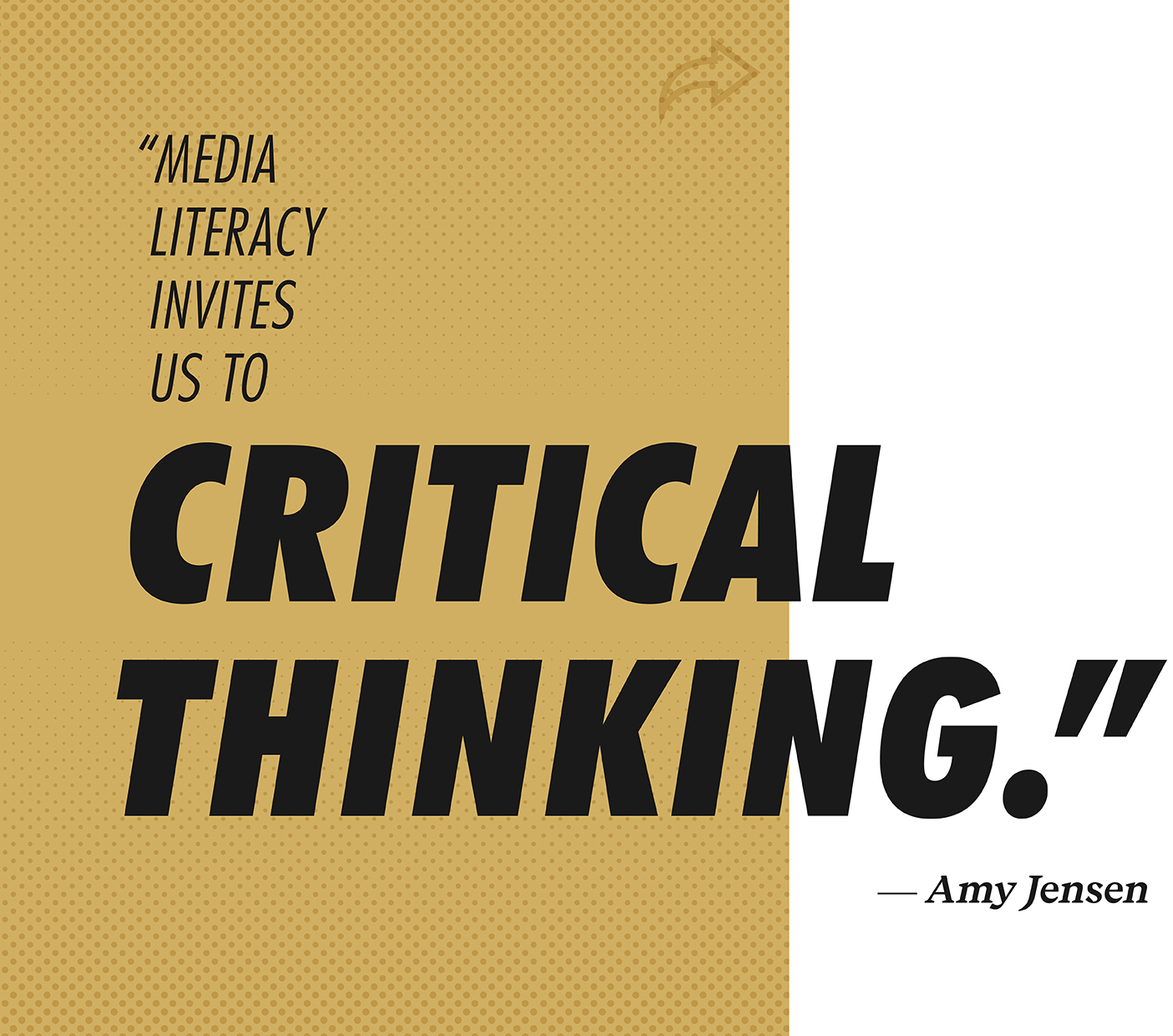
The Media-Literate Mindset
We get it: not all the information in the world is perfectly accurate, and we share the burden of figuring out what is and isn’t. But that kind of news and media literacy requires a hypervigilance that a lot of us are just too stretched thin to summon. Honestly, who has time to fact-check every article they read on the internet? (One guide recommended asking yourself two dozen questions about the information. Exhausting.)
A new approach is to see critical thinking as a kind of computer program that runs in the background of your brain. Green teaches Writing 150 students just three strategies that make up “a mindset of critically thinking about a source before they engage and spend time reading it.”
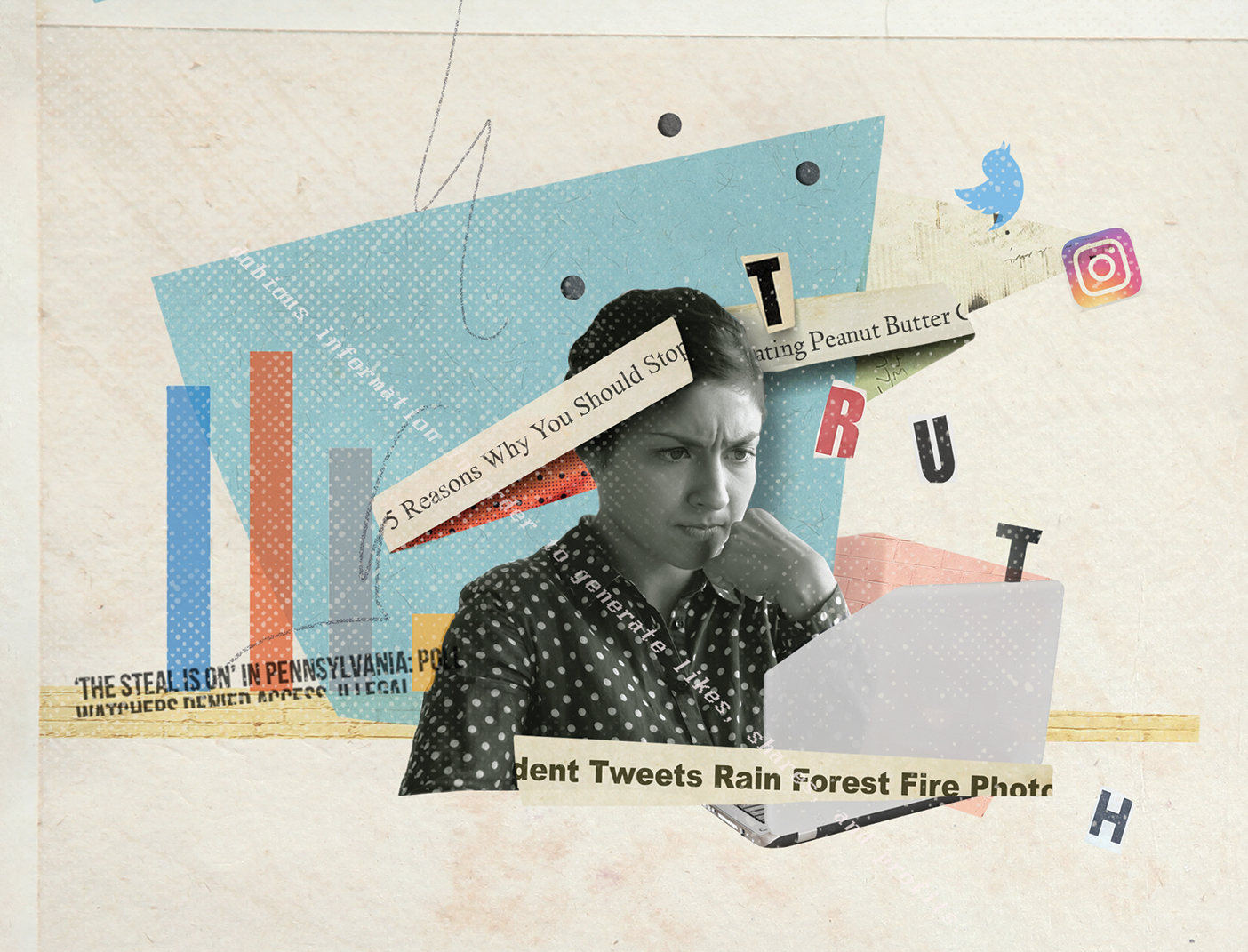
First, read laterally.
Stanford University researchers, in a 2018 study, looked at how undergrads, PhD historians, and professional fact-checkers evaluated the worth of websites. The historians and students tended to read “vertically,” scrolling up and down the website to evaluate it. They were apt to give too much credit to a site’s fancy logo or legit-sounding domain name. One well-designed graph, and it was all over for critical thinking.
Fact-checkers, on the other hand, read “laterally.” They quickly took their bearings of the original website, then popped open new browser tabs to see what others said about the source. One fact-checker, asked to gauge an article on bullying by an American association spent a mere eight seconds on the website before navigating to the article about the organization on Wikipedia (a useful source for laterally expanding understanding). From there the fact-checker followed links to other news stories and reports—and quickly learned that the association authoring the piece is described by some as a hate group. Going off-site to read laterally got the fact-checkers to additional, relevant perspectives quickly.
Second, go upstream.
Like reading horizontally, going upstream demands that readers get off the page they’re reading to figure out just who the cited sources and experts are. “Just noticing that they have sources is okay, but if you actually trace some of those sources back a step, you can look to see who [they are] citing,” suggests Green. “Is it legislation and experts and scholarly research? Or are the hyperlinks to conspiracy theorists or fringe ‘experts’?” Even if an article is loaded with links, they may not tie back to helpful primary information. Look for stories that bring in expert sources from multiple perspectives.
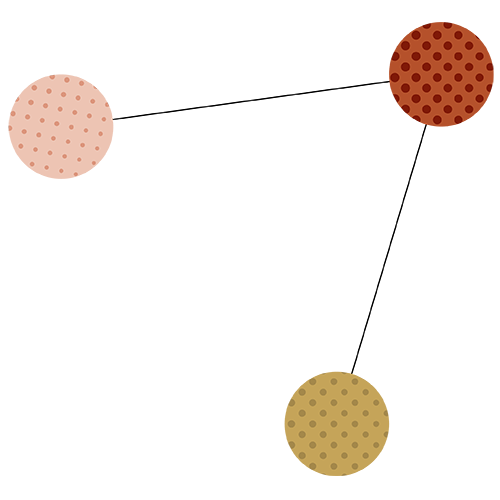
Third, acknowledge bias.
Sometimes it’s obvious that an author or media source is creating content from a particular viewpoint. But readers bring their own beliefs and ideas—political, social, economic, religious—to the table as well. And according to one 2016 study published in Computers in Human Behavior, we’re almost two times as likely to gravitate toward information that supports whatever we already believe. In Green’s research some students reading a 2017 piece from NPR on birth control for teens judged the article’s credibility based solely on their personal views about teen access to birth control, despite the article’s citation of academic research.
You’ll never get rid of all your biases, nor should you have to check your values at the door. But it’s important to acknowledge that you have them and that you’re using them to judge information. Sophisticated readers can object to the presentation of the facts or the conclusions the author drew without rejecting accurate data as fake news. In other words, you don’t have to like a piece of information to accept that it may be factually correct.
Media-Literacy Mistakes
If you’ve gotten this far into an article about information literacy, you may be counting up all the people in your life who need to become better critical thinkers. If so, you’re probably part of the problem. Emilie Elmont Davis (BS ’15, MS ’17), a visiting assistant professor in the School of Family Life, teaches students in her media, family, and human development class that we’re all susceptible to “the third-person effect hypothesis,” which suggests that we assume problematic media “[have] a larger effect on everyone else,” she says. In today’s crazy media climate, even thoughtful critical thinkers have lapses in how they absorb information. Consider whether you’ve made any of these errors.

MISTAKE 1: Letting social media feed you the news.
When journalism professor Kristoffer D. Boyle (BA ’01, MA ’05) asks his students in Mass Communication and Society where they get their news, the answer is usually social media. Unfortunately, that makes them more likely to live in a self-created echo chamber, since social-media algorithms are designed to adapt to our interests, forever feeding us posts and videos similar to things we’ve already liked. To get out of your silo, seek out a few well-regarded news sites that will show you a range of stories. According to AdFontesMedia.com, which rates major media outlets for bias, APNews.com, Reuters.com, TheHill.com, and VOANews.com are all pretty middle of the road. Another approach: read broadly across the political spectrum, with a daily visit to both, say, the New York Times and the Wall Street Journal. Be willing to pay for well-researched journalism, too, by subscribing to print or online newspapers or magazines or your local community paper. As the saying goes, if you’re not paying for it, you’re probably the product being sold, serving up clicks and views to a site’s advertisers.
MISTAKE 2: Allowing emotions to drive your likes and reposts.
Internal Facebook documents have revealed that, since 2017, the algorithms at the social media behemoth have systematically elevated posts that garnered more emoji reactions—those icons labeled love, care, haha, wow, sad, and angry—treating them as five times more valuable than all-purpose likes, even after Facebook data scientists realized that low-quality, controversial posts provoked the most emojis. Emotional reactions led to engagement—good for social-media page views, not your soul. Next time a post or article makes you feel all the feelings, pause to ask yourself why you’re having such a strong reaction. Is this post true? Worth commenting on? Or are you being manipulated?
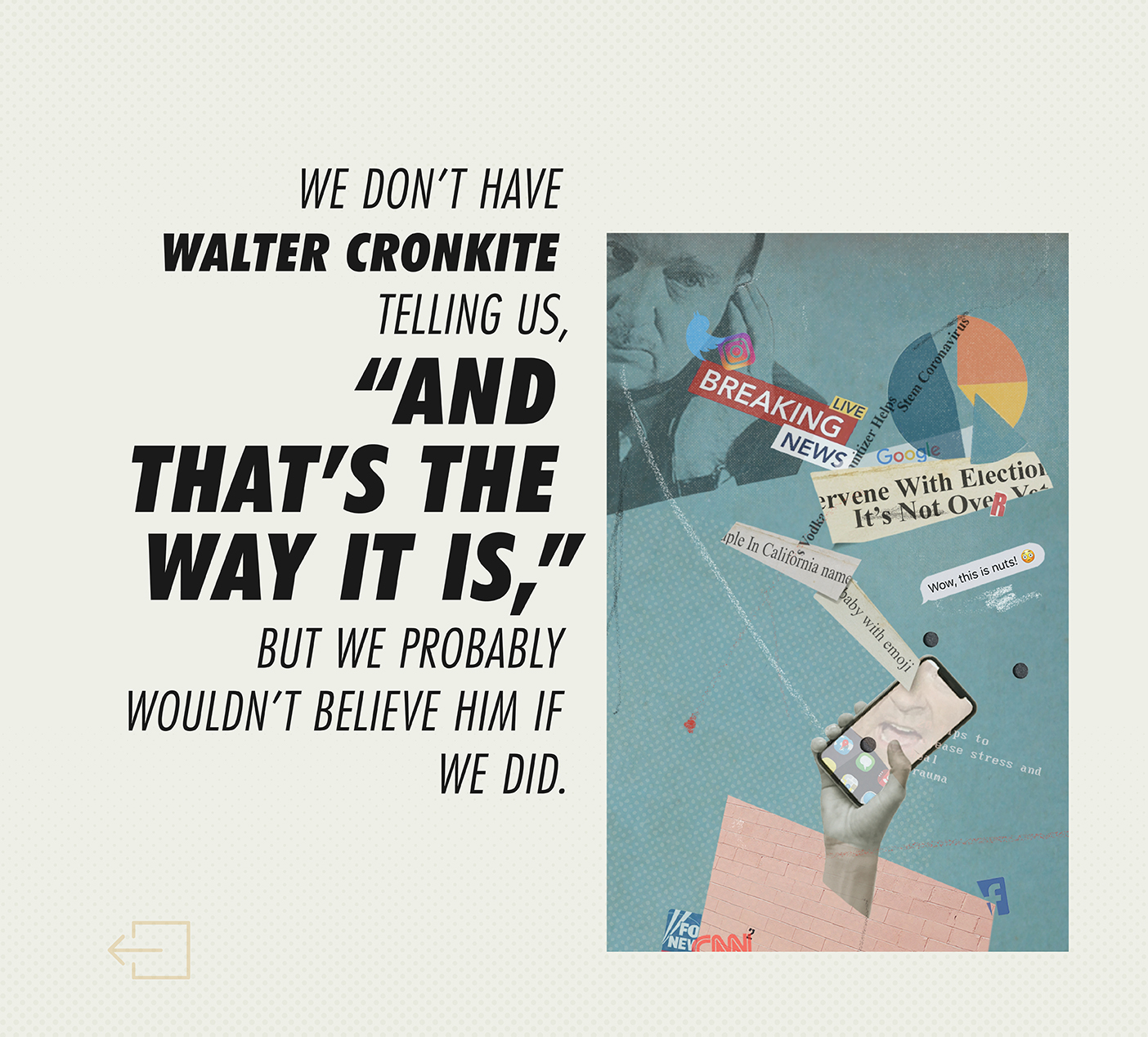
MISTAKE 3: Skipping the fact-check when it matters most.
Sometimes believing less-than-true information (“The moon landing was faked!”) has little impact on your life. Not so with the COVID-19 pandemic, which has spawned so many rumors, conspiracy theories, doctored photos, and biased news stories that the World Health Organization called it an “infodemic.” “There’s no question in my mind that the amount of misinformation and disinformation about COVID-19 is increasing the spread of the infection,” says Carl L. Hanson (BS ’90, MS ’91), chair of the BYU Department of Public Health. It’s always important to think critically about information, but even more so when it materially affects your decision-making and when the consequences are so serious.
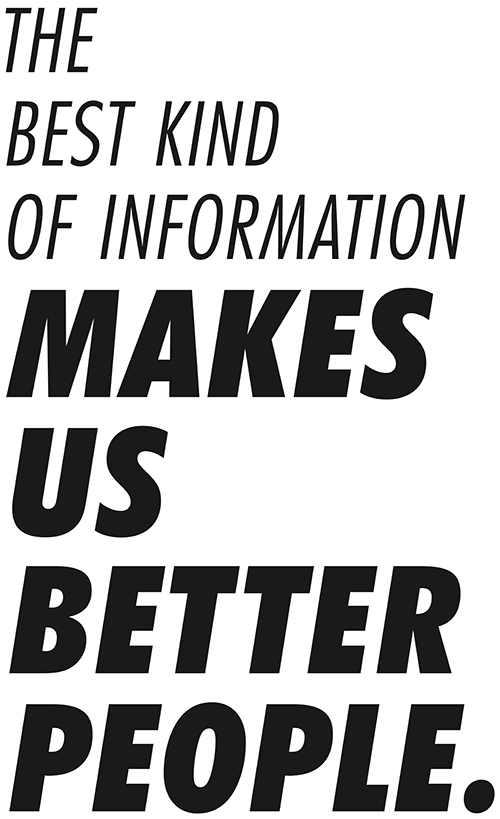
MISTAKE 4: Shaping your worldview with bad news.
According to a 2020 study by Hanson and other BYU researchers, taking in more news about COVID-19 made people take the health threat more seriously. On the other hand, a large 2020 German study in the European Archives of Psychiatry and Clinical Neuroscience found that daily watching 2.5 hours or more of COVID-related news correlated with higher levels of anxiety and depression. Being accurately informed matters, but “you don’t need to let it dominate your whole life,” says Boyle—or make you think the world is more awful than it actually is. He suggests balancing your daily media diet with doses of happy (and true!) news from sites like Upworthy, Good News Network, or Instagram’s Good News Movement to remind you that “some really good things are going on too.” (See “Reasons for Hope.”)
MISTAKE 5: Confusing infotainment for hard news.
A lot of what we think of as “news” these days, especially on radio shows or cable TV channels like MSNBC or Fox, is actually infotainment: commentary and debates by talking heads that masquerade as news but are really entertainment meant to sell ads. (Think the Rachel Maddow Show or Tucker Carlson Tonight.) “That has its place. I’m not against that,” clarifies Carter, “but I actually don’t look at it as journalism,” which he says should be independent.
Even within a publication, there may be sections that are more or less reliable as news sources. For instance, according to the media-bias chart at Allsides.com, news content in the Wall Street Journal is politically centrist, but the publication’s opinion content leans right. And since they’re often designed to look the same, the only clue that you’re reading opinion content may be a tiny label somewhere on the page.
MISTAKE 6: Dismissing the mainstream media.
According to Hanson’s latest research, “health-related beliefs about mask wearing and vaccines vary over time in response to high-profile cues to action from prominent organizations and individuals.” Unfortunately, politicians and celebrities are responsible for about 20 percent of myths and misinformation about COVID while also reaping nearly 70 percent of social-media engagement. Students, notably, are skeptical of the mainstream news media, yet weirdly susceptible to messages from crowd-sourced sites like Reddit. If you’re going to bypass traditional media gatekeepers, don’t assume that non-expert voices are more reliable.
MISTAKE 7: Posting without thinking.
Realistically, you may not read laterally, go upstream, and check for bias on every article you read. At the very least, do it before you share or post, or before you allow something you read to influence a major decision (like whether to get a vaccine). Davis reminds her students that they’re not just helpless consumers caught in the media spin cycle; they’re also creators, one Instagram story, Facebook post, or TikTok video at a time. That comes with responsibility to respond to falsehoods you see in the media without perpetuating myths of your own.
The good news is there is good news out there—true and beautiful information that makes our lives better. And when you follow the counsel of Doctrine and Covenants 9 to study concerns out in your mind, while engaging in daily spiritual practices like reading the scriptures and praying, the Spirit can help you discern truth from falsehood.
Perhaps, says Jensen, the most important question is whether the information we’re eyeballing and the content we’re creating “leads us to think kind thoughts about people [and] ourselves, leads us to better understand a part of the world that we didn’t understand before.” The best kind of information makes us better people, so it’s worth the effort to carefully seek it out and reject the rest. “I’m serious business about what I’m going to take in,” says Jensen, “because it really matters. It really matters to my soul.”
Melody Warnick is a freelance writer and an editor and writer at Virginia Tech in Blacksburg, Virginia.
Feedback Send comments on this article to magazine@byu.edu.



